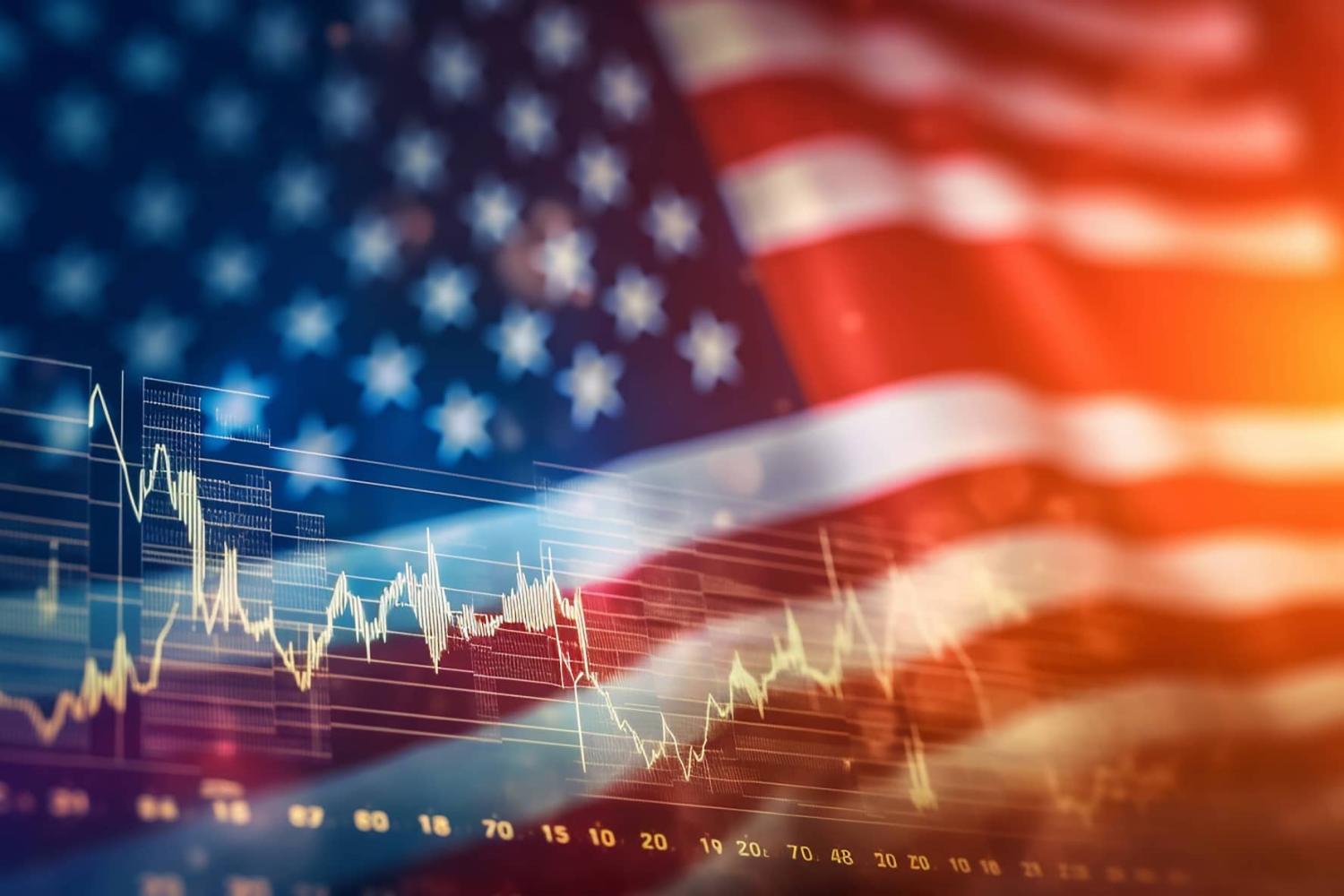| Introduction: Why the Economic News Matters | Economic news often feels like a maze—complex and constantly changing. Yet, staying updated on economic developments is essential because these shifts affect our daily lives. Whether it’s the cost of goods, our paychecks, or even job opportunities, the economic environment directly impacts us. By keeping an eye on recent economic headlines, we can better understand what’s happening and prepare for what’s ahead. Let’s dive into what’s currently influencing the economy in the United States. |
| Overview of the US Economy in Early 2025 | At the start of 2025, the US economy is walking a fine line. We’re seeing steady growth, but there are challenges on the horizon. Let’s break down some of the major trends that are taking shape in 2025. |
| Current GDP Growth Trends | The GDP (Gross Domestic Product) of the United States is showing modest growth in early 2025. While it’s not the explosive growth seen in some previous periods, the economy is growing at a sustainable pace. Experts are projecting around 2.3% annual GDP growth, signaling a steady recovery from previous disruptions. The growth is largely driven by consumer spending and a recovering job market, but global trade and domestic production also contribute to the overall expansion. |
| Unemployment Rates and Job Market Developments | As of January 2025, the US unemployment rate stands at a low 3.5%, indicating a relatively healthy job market. While job creation is solid, there are still industries facing labor shortages, especially in sectors like technology, healthcare, and manufacturing. Despite the tight labor market, wages have been increasing at a moderate rate, providing workers with more disposable income. However, there are concerns about underemployment, as many workers are in part-time positions or jobs that don’t align with their skills. |
| Inflation and the Federal Reserve’s Response | Inflation has been a hot topic over the past few years, and it’s still a significant concern in 2025. While prices have stabilized somewhat compared to previous peaks, inflation is still above the Federal Reserve’s target of 2%. To curb inflation, the Fed has raised interest rates, making borrowing more expensive. This has slowed down some sectors like housing and consumer spending, but it’s also preventing the economy from overheating. The Fed’s moves are carefully calculated to balance growth and price stability. |
| Key Economic Indicators to Watch | There are several economic indicators that give us a clearer picture of where the US economy is heading. These include consumer confidence, stock market trends, and housing market activity. Let’s dive deeper into each of these. |
| Consumer Confidence and Spending Habits | Consumer confidence is a vital ohiovoice.com gauge because when people feel secure about their finances, they tend to spend more, stimulating the economy. Recent data shows that consumer confidence has dipped slightly, mainly due to rising costs and economic uncertainty. However, consumers are still willing to spend on essential items, and there’s been growth in discretionary spending, especially in travel and entertainment. With inflation slowly tapering off, many experts expect consumer confidence to rebound. |
| Stock Market Performance and Volatility | The stock market has seen significant volatility in recent months, with tech stocks taking a hit while traditional industries like energy and finance have been performing better. Investors are cautiously optimistic, but market fluctuations are making some nervous. That said, there are opportunities for savvy investors in industries like renewable energy, AI, and cybersecurity. Long-term projections still point toward growth, but short-term fluctuations could create both risk and opportunity. |
| Housing Market Outlook | The US housing market has been cooling off after the pandemic-driven boom, but there are still bright spots. Mortgage rates, though elevated, have stabilized, which is helping the market regain balance. The demand for homes remains strong in certain regions, particularly in suburban areas where remote work is more common. However, affordability remains a concern, especially for first-time homebuyers. Rising home prices and high mortgage rates continue to make it tough for some people to enter the market. |
| Interest Rates and Housing Affordability | The Federal Reserve’s interest rate hikes over the past few years have made borrowing more expensive, particularly for homebuyers. Mortgage rates have hovered around 6-7%, which has slowed down the frenzy seen in the housing market a couple of years ago. For many prospective buyers, this has made homeownership less affordable, while others have been forced to put their homebuying plans on hold. However, with inflation under control and signs of economic stabilization, interest rates may eventually come down, bringing some relief to potential homeowners. |
| Global Influences on the US Economy | The global economic landscape has a direct impact on the US economy. From trade wars to oil prices, international developments shape domestic growth and job markets. Let’s take a look at some key factors influencing the US economy in 2025. |
| The Impact of International Trade Policies | The US continues to adjust its trade policies with both allies and competitors. Trade relations with China, in particular, have been a major area of focus. While tariffs have been lowered in certain sectors, new trade agreements have brought changes to agriculture, technology, and manufacturing exports. These policies aim to boost US production and make American products more competitive abroad. However, trade uncertainties still present risks, especially in industries reliant on international supply chains. |
| Energy Prices and Supply Chain Disruptions | The global energy market continues to be volatile, with oil prices fluctuating due to geopolitical tensions and supply chain disruptions. For the US economy, this means potential price hikes for energy-dependent industries. High gas prices can also affect consumer spending habits, especially in transportation and travel. Additionally, supply chain issues, initially caused by the pandemic, continue to ripple through industries, affecting everything from technology to consumer goods. |
| Sector-Specific Economic Updates | While the overall economy impacts everyone, certain sectors are having distinct economic experiences. Let’s explore how specific industries are performing in early 2025. |
| Tech Industry’s Role in Economic Growth | The tech industry is a key driver of economic growth in the US, contributing significantly to GDP and job creation. Companies in AI, cloud computing, and cybersecurity continue to experience rapid growth, with investors eager to tap into this expanding market. Tech advancements are also sparking innovation across other sectors, boosting productivity and creating new opportunities for businesses. However, challenges related to regulation and global competition are keeping tech companies on their toes. |
| Energy and Sustainability: A Growing Economic Focus | The push for sustainable energy and practices is gaining momentum in the US economy. Renewable energy sources like wind, solar, and electric vehicles are becoming increasingly important to both policymakers and consumers. Federal investments in green energy technologies are expected to boost economic activity in this sector while contributing to climate goals. However, the transition to cleaner energy also presents challenges, particularly in terms of job displacement and the costs of infrastructure investments. |
| Federal Government’s Economic Policies | The federal government plays a crucial role in shaping the economy. From tax policies to stimulus plans, government action has both immediate and long-term effects. |
| Tax Changes and Stimulus Plans | In 2025, the US government is considering new tax reforms aimed at both businesses and individuals. Proposed changes include adjustments to corporate taxes and personal income tax brackets. There’s also the potential for additional stimulus packages to support struggling sectors and low-income families. These policies aim to stimulate the economy, but they come with a hefty price tag. Balancing the need for economic relief with fiscal responsibility is a critical challenge for lawmakers. |
| Infrastructure Investment and Economic Growth | The US is investing heavily in infrastructure—an essential move for long-term economic growth. From roads and bridges to high-speed internet and clean energy projects, these investments are designed to modernize the country’s infrastructure, create jobs, and drive economic expansion. While the immediate impact may be modest, these efforts are expected to pay off over the coming decades, making the economy more competitive and resilient. |
| What the Future Holds: Economic Forecast for 2025 | Looking ahead, the US economy is expected to experience moderate growth, with certain sectors like tech and energy leading the charge. However, global tensions, domestic challenges, and unforeseen disruptions may present obstacles to a smooth ride. |
| Predicted Economic Growth and Stability | Experts forecast that the US economy will grow by 2-2.5% in 2025. While this is a solid rate, it’s slower than the recovery seen in 2023-2024. However, economic stability is the key focus, as officials aim to avoid another inflationary crisis. |
| Potential Risks and Economic Slowdowns | Risks include global economic instability, rising energy prices, and a potential slowdown in consumer spending. A global recession could also impact demand for US exports, further slowing growth. |
| Conclusion: Navigating the Evolving Economic Landscape | The US economy is in a phase of transition, with both challenges and opportunities. As we move through 2025, staying informed about key economic indicators—such as job markets, inflation, and government policies—will help individuals and businesses prepare for the future. While risks exist, the overall outlook remains positive, and proactive decisions can mitigate negative impacts. |





